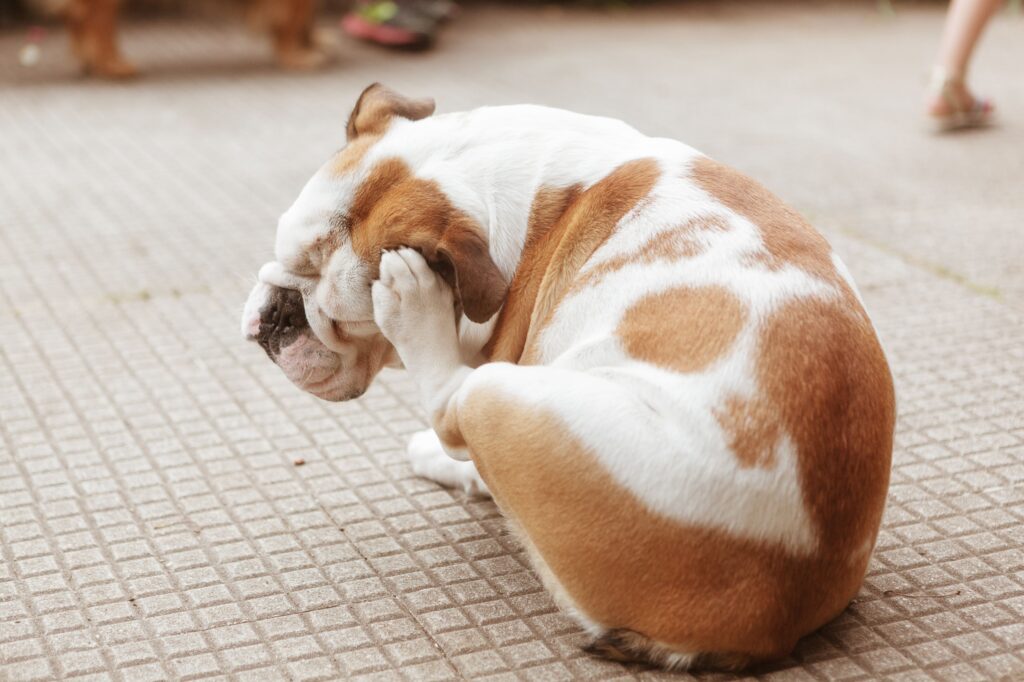Yeast in Dogs: What It Is, What to Avoid, and How to Help Naturally
Yeast in Dogs: What It Is, What to Avoid, and How to Help Naturally
If you’ve ever noticed your dog constantly scratching, licking their paws, or smelling a bit funky even after a bath, they might be dealing with a yeast overgrowth.
Yeast infections are incredibly common in dogs—and just as frustrating for pet owners. But the good news? There are natural, effective ways to help your dog feel better and get their skin and gut health back on track.
So, What Is Yeast in Dogs?
Yeast is a type of fungus that naturally lives on your dog’s skin and in their gut. Normally, it’s harmless. But when the balance of good bacteria and yeast gets disrupted—boom!—you’ve got an itchy, irritated dog on your hands.
The most common culprit? Malassezia pachydermatis, a yeast that loves warm, moist places like ears, paws, skin folds, and armpits.
Signs Your Dog Might Have a Yeast Problem
- Itchy, red, or inflamed skin
- Licking or chewing paws
- Hair loss
- Musty or “corn chip” smell
- Recurring ear infections
- Greasy or scaly skin
- Blackened or thickened skin in chronic cases
If you’re nodding your head right now—yep, sounds like yeast.
What Causes Yeast to Get Out of Control?
Yeast thrives when there’s an imbalance in the body. Here’s what might trigger that:
- Poor diet (especially one high in starch or sugar)
- Overuse of antibiotics or steroids
- Weak immune system
- Allergies (food or environmental)
- Underlying conditions (like hypothyroidism)
What Can We Do About It?
Treating yeast naturally is about restoring balance—from the inside out. Here’s a breakdown of what you can do:
🥦 Start with the Diet
Food matters. A lot. Yeast feeds on sugars and starches, so cutting those out is key.
🛑 Avoid:
- Kibble with rice, corn, wheat, potatoes, peas, or carrots
- Processed treats high in carbs
- Sugary snacks (even honey or fruit in large amounts)
✅ Choose instead:
- Low-carb, species-appropriate raw food
- Meat-based diets with organ meats, bone, and healthy fats
- Foods with natural anti-fungal properties (like garlic in small amounts, raw coconut oil, or oregano)
- Fermented veggies in small amounts (like sauerkraut—great for gut health)
🌿 Natural Remedies to Help
Here are some natural tools to fight yeast topically and internally:
1. Apple Cider Vinegar (ACV)
Diluted with water (50/50), ACV can be used as a rinse or spray to help rebalance skin pH and fight yeast on paws, skin, and ears. (Never use on broken skin—it’ll sting!)
2. Coconut Oil
Has anti-fungal and soothing properties. Can be applied topically or added to food in small amounts.
3. Probiotics
Help crowd out yeast by boosting beneficial gut bacteria. Choose high-quality, pet-safe probiotic blends.
4. Digestive Enzymes
Aid in breaking down food, improving nutrient absorption, and supporting gut health.
5. Colloidal Silver or Herbal Rinses
For topical treatment, gentle anti-fungal options like colloidal silver, calendula, or chamomile rinses can calm irritated skin.
6. Anti-Yeast Supplements
Look for natural blends containing oregano, caprylic acid, olive leaf, or pau d’arco—all known for their anti-fungal action.
How Long Does It Take to Clear Up?
Yeast detox can take a few weeks, especially if it’s a long-standing issue. You may notice your dog seems worse before they get better—this is common as the body flushes out toxins (often called a “die-off” reaction). Go slowly, support the liver, and stay consistent.
Final Tips
- Bathe regularly with a yeast-friendly, gentle shampoo—avoid anything too harsh or drying.
- Dry thoroughly—especially between toes and skin folds.
- Clean ears weekly with a safe ear cleaner if they’re prone to flare-ups.
- Stick with a low-starch, natural diet—this is key to long-term prevention.
When to See a Vet
While natural approaches can work wonders, always consult your vet if:
- Symptoms persist or worsen
- Your dog is in obvious discomfort
- You suspect an underlying health issue
Sometimes yeast can be a symptom, not the root problem.
Yeast doesn’t have to take over your dog’s life (or yours). With the right approach—clean diet, natural support, and consistency—you can restore your dog’s comfort and vitality, naturally…

